A Very Brief History of Desktop Publishing
Our throwback of the week – The Sigmagraph 6000 Mark II.
Consider that print ads started out as far back as early cave paintings. Next came Gutenberg, then the Linotype machine. In the 20th century, we’ve gone from the paste-up era to the digital page layout era in the blink of an eye. This short article is a look back at digital page makeup / litho systems of the 1980s era, in particular the Sigmagraph series systems built by Dainippon Screen based in Japan. Screen America is located in Schaumburg Illinois.
The Sigmagraph 2000
One of the first digital page make-up systems was the Sigmagraph 2000 designed and built by Japan-based Dainippon Screen. There is not a lot of information left in the Sigmagraph 2000.
It was slightly larger than the 6000 and used older equipment but was a classic mainframe system.
The Sigmagraph 6000 Mark II
The Sigmagraph 6000 was the next-generation mini-computer based on the Hewlett-Packard 3000 series. The Sigmagraph 6000 was the last of the mainframe style page makeup and image processing systems, soon replaced by Scitech Systems desktop software and eventually Adobe Photoshop, Illustrator, and In-Design. The system used washing machine-sized HP 7606 800Mb disk drives and Hitachi vacuum tape data storage. Here is the full-color Sigmagraph 6000 brochure from 1987. If you worked with this system feel free to share your experience or this article.
1987 Sigmagraph 6000 Mark II Color Brochure
-
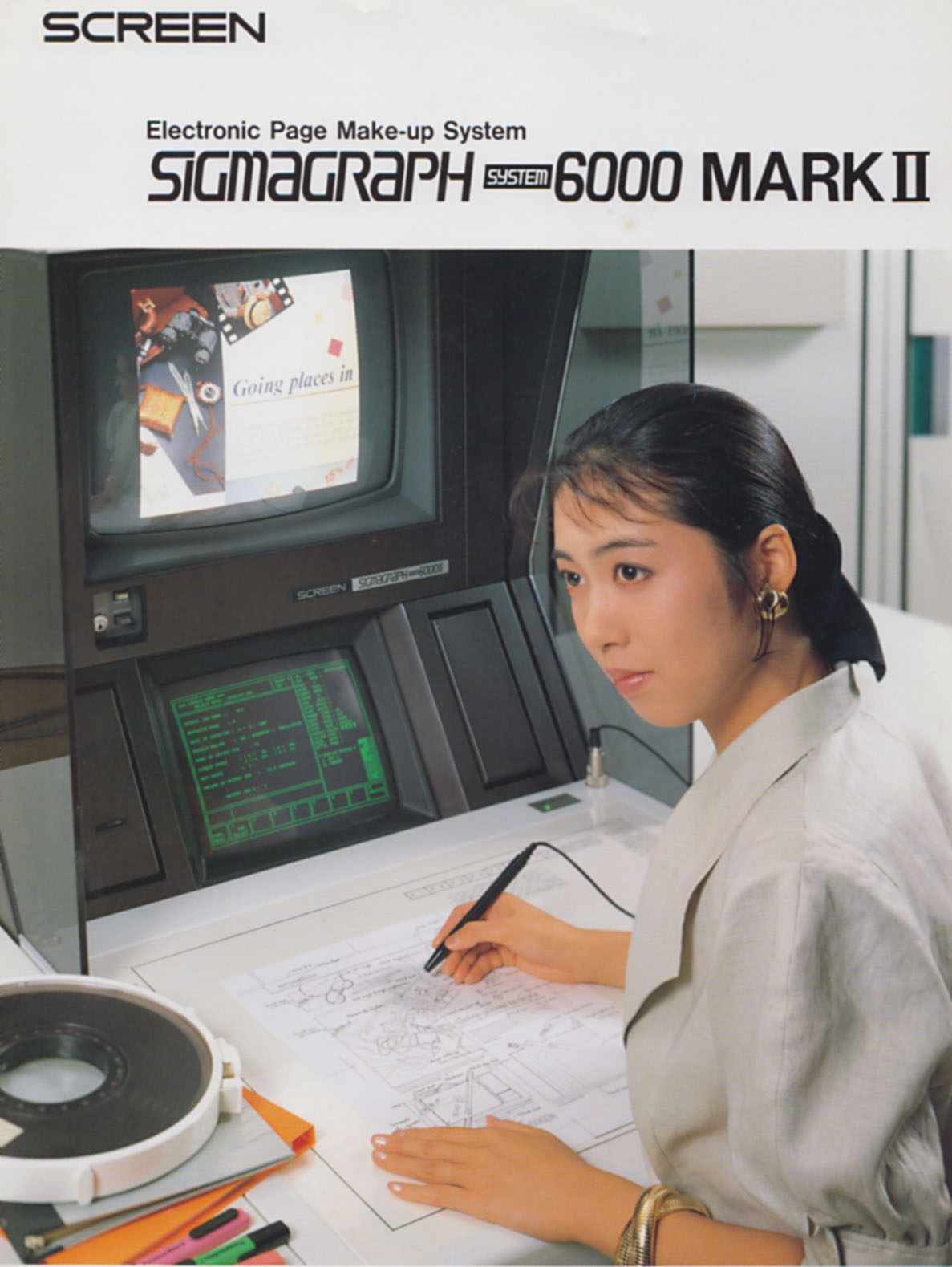
Sigmagraph 6000 Catalog Cover
-

Sigmagraph 6000 page 1
-
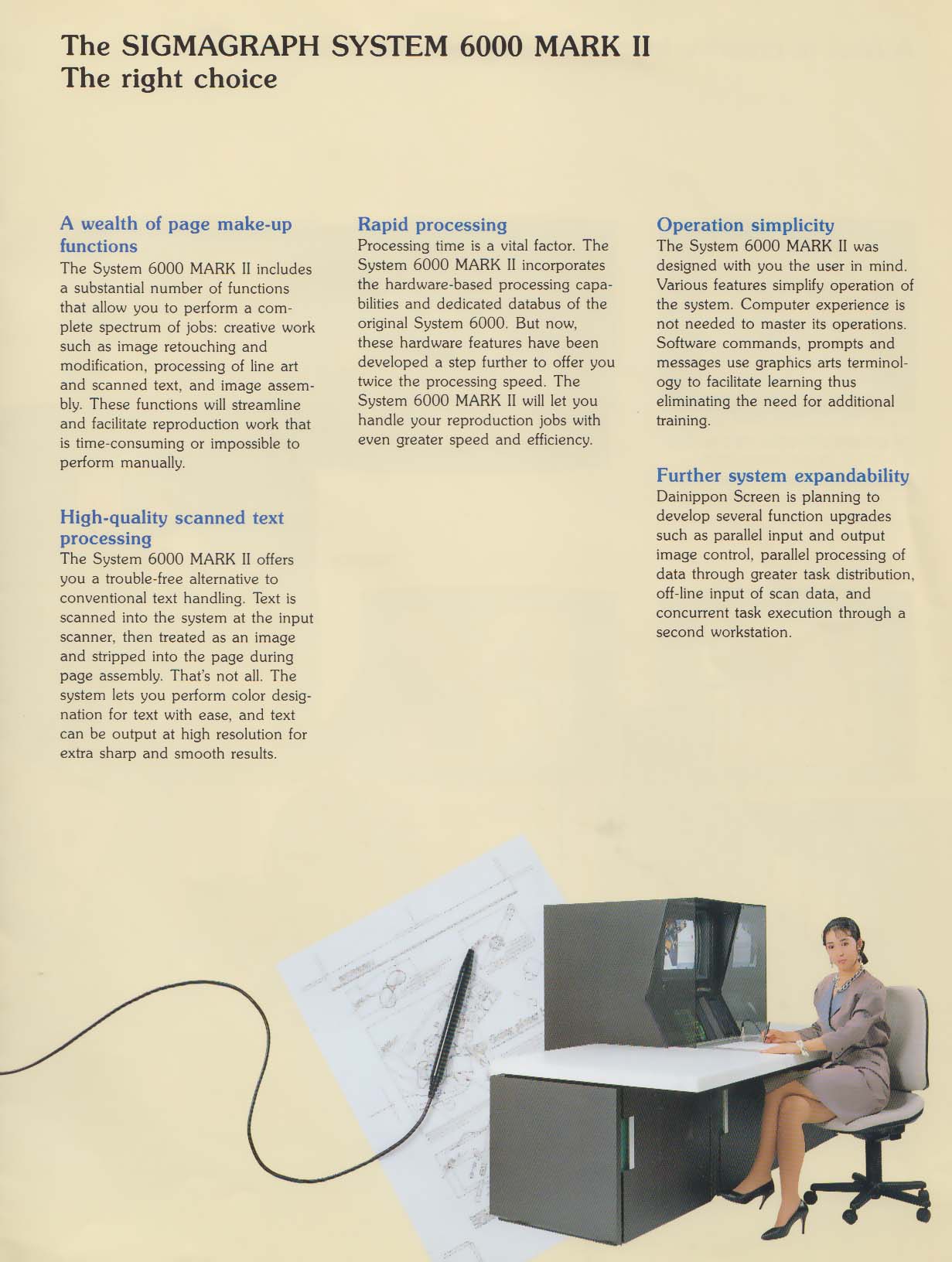
Sigmagraph 6000 page 2
-
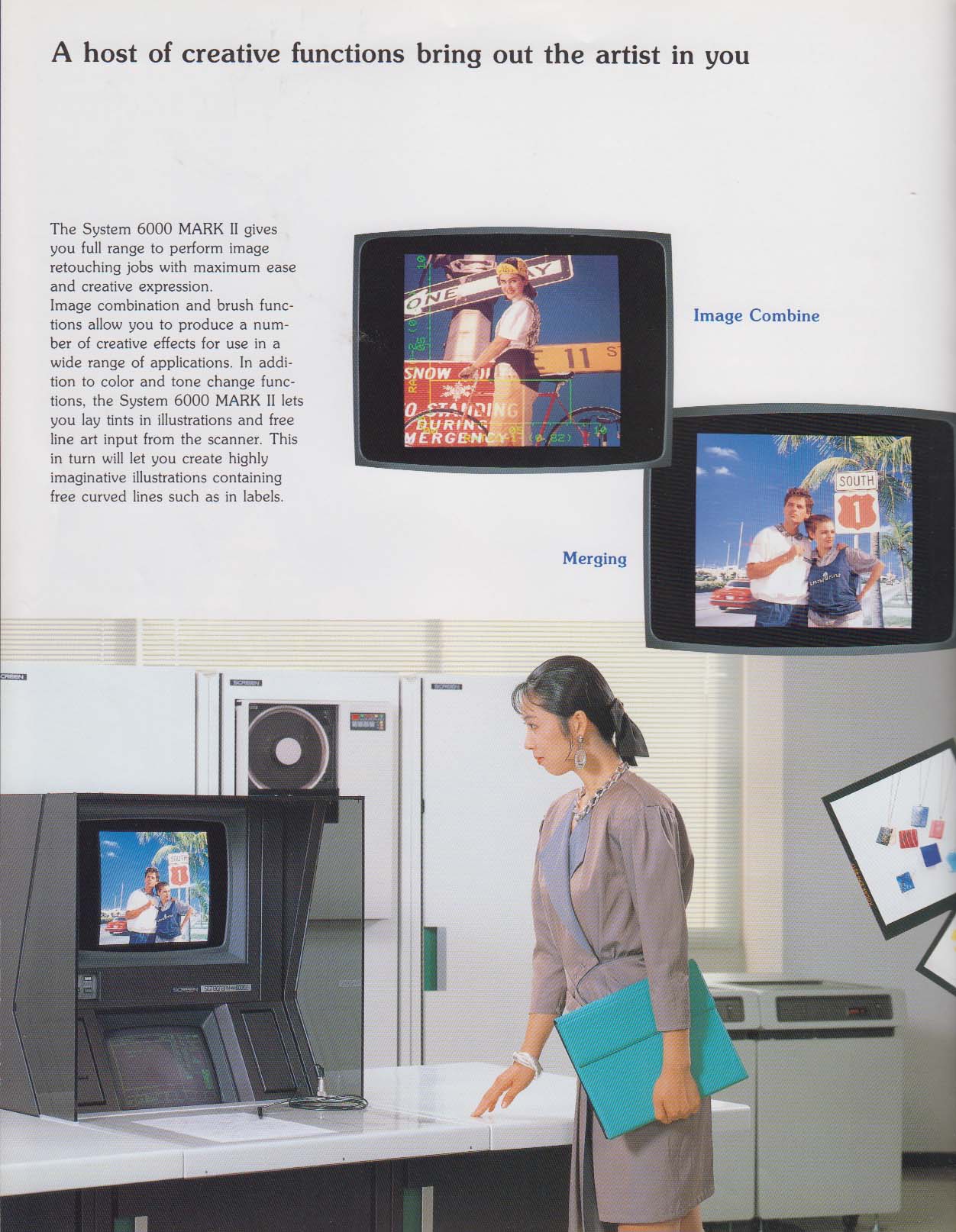
Sigmagraph 6000 page 3
-
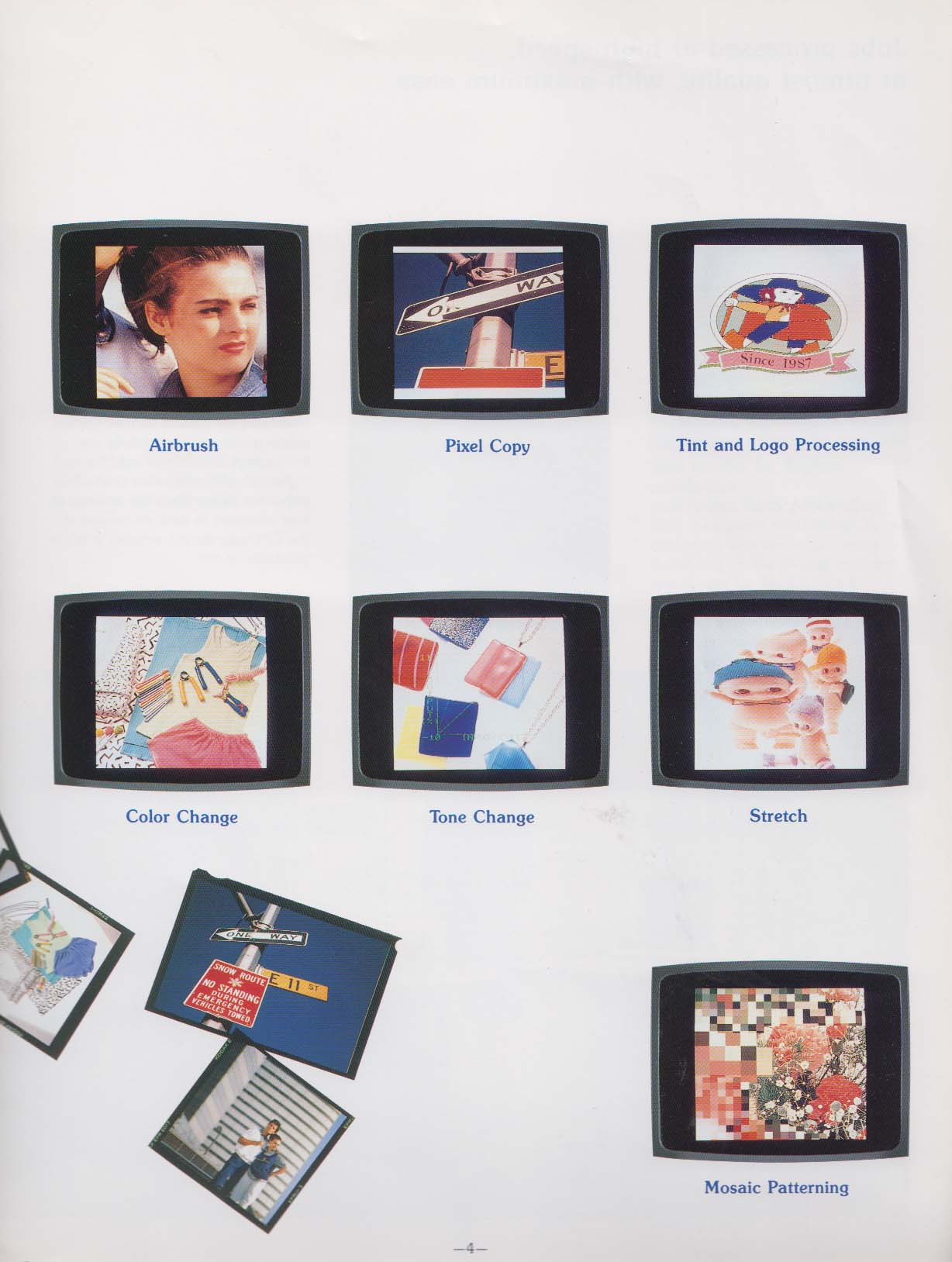
Sigmagraph 6000 page 4
-
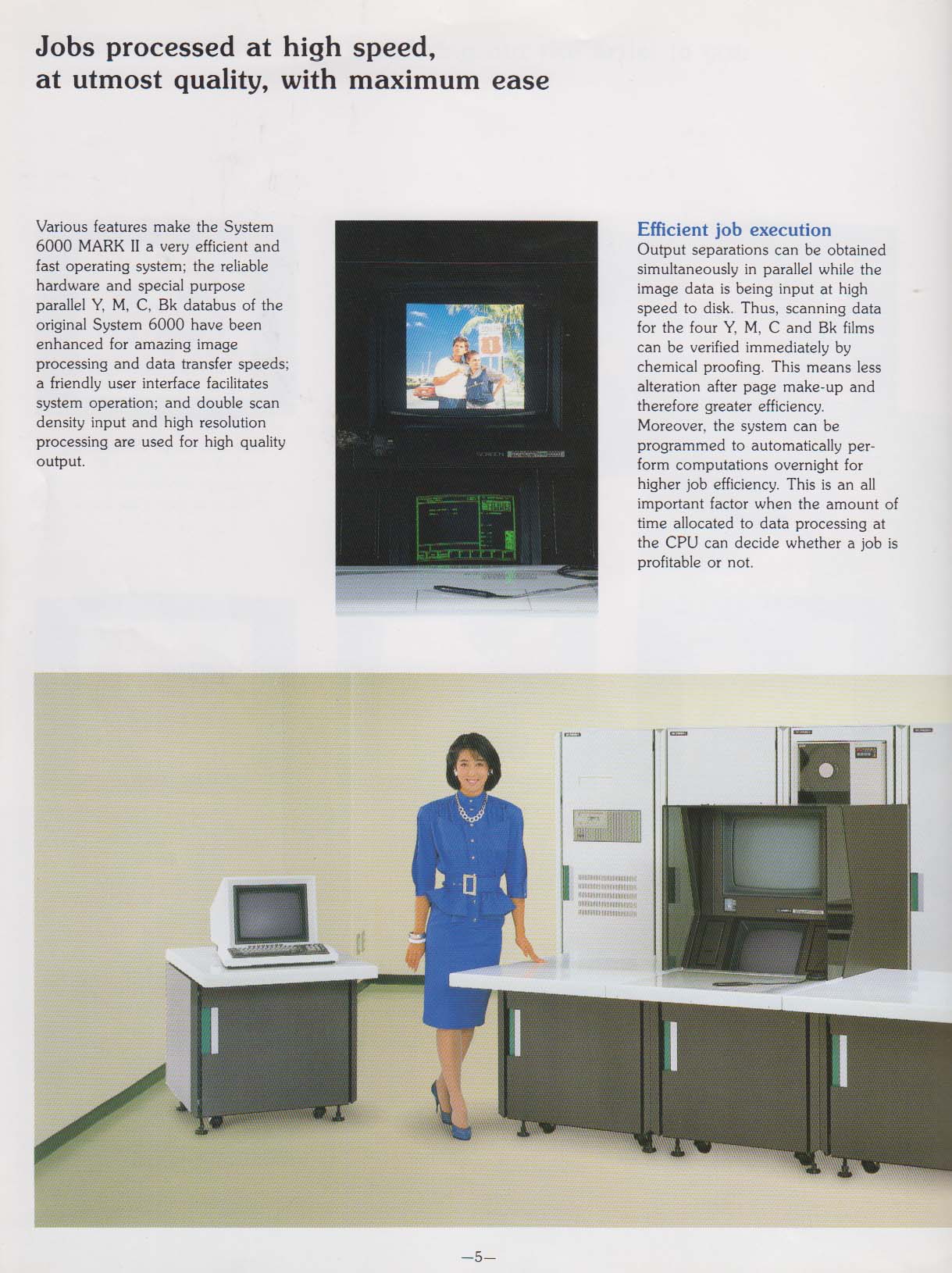
Sigmagraph 6000 page 5
-
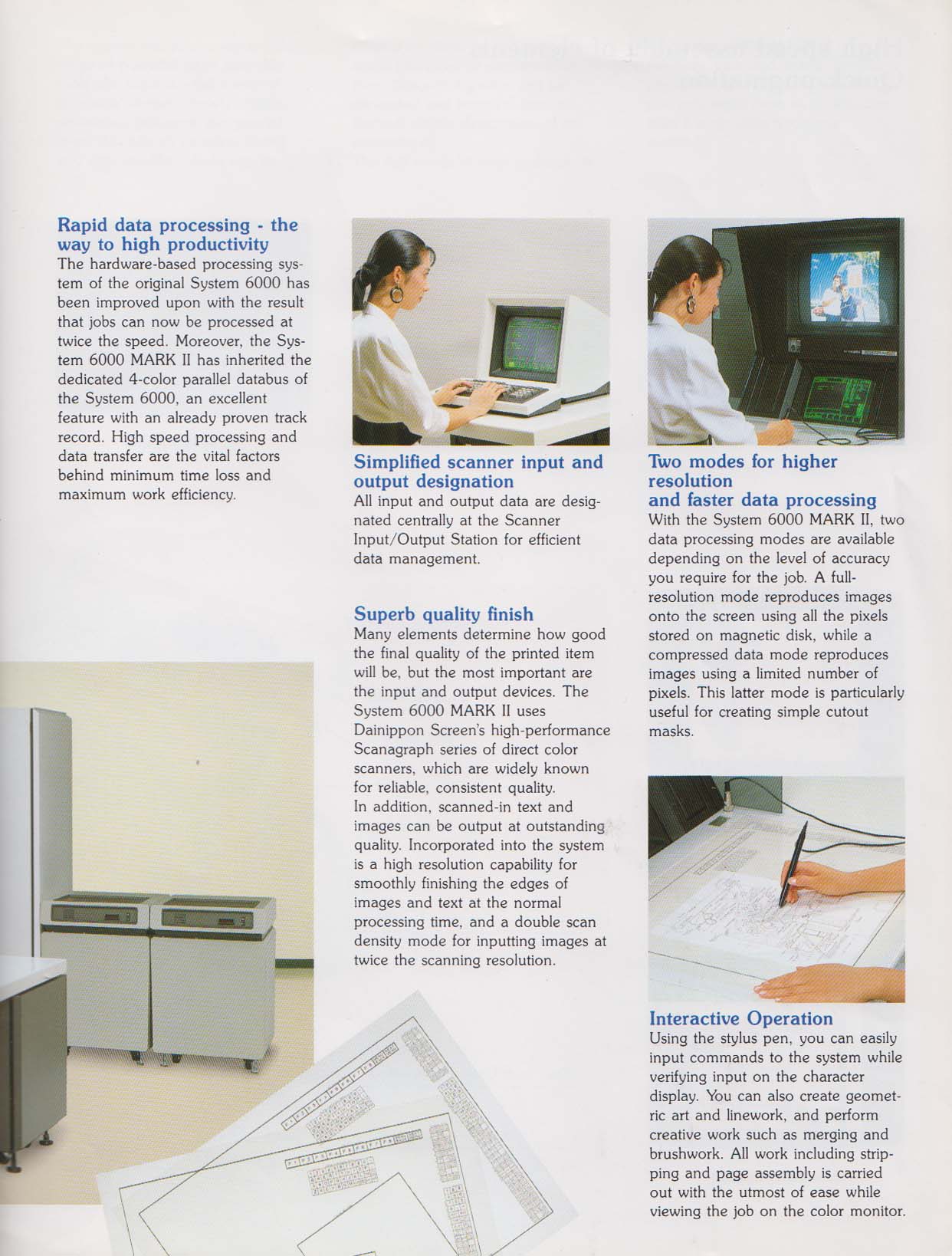
Sigmagraph 6000 page 6
-
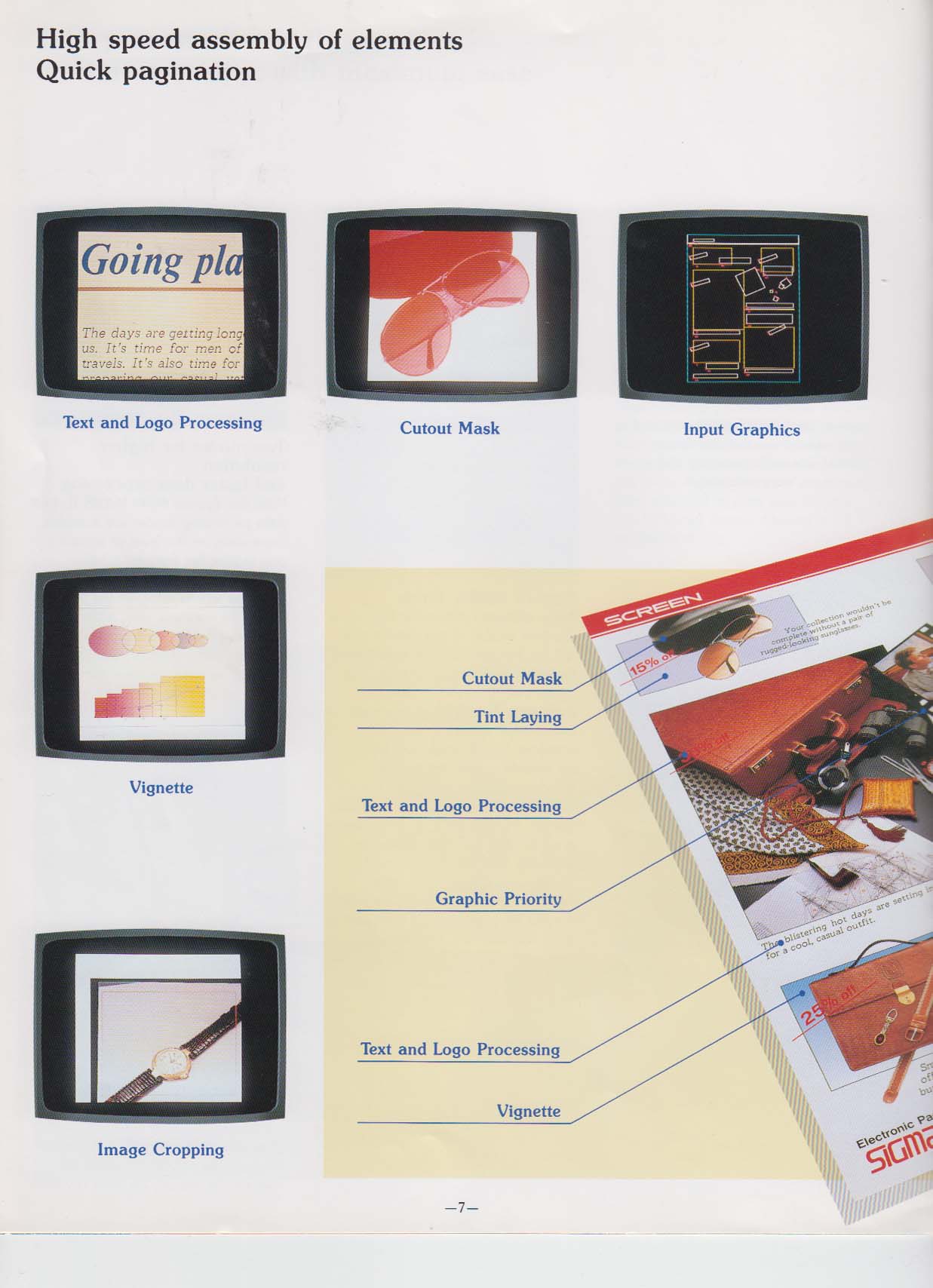
Sigmagraph 6000 page 7
-
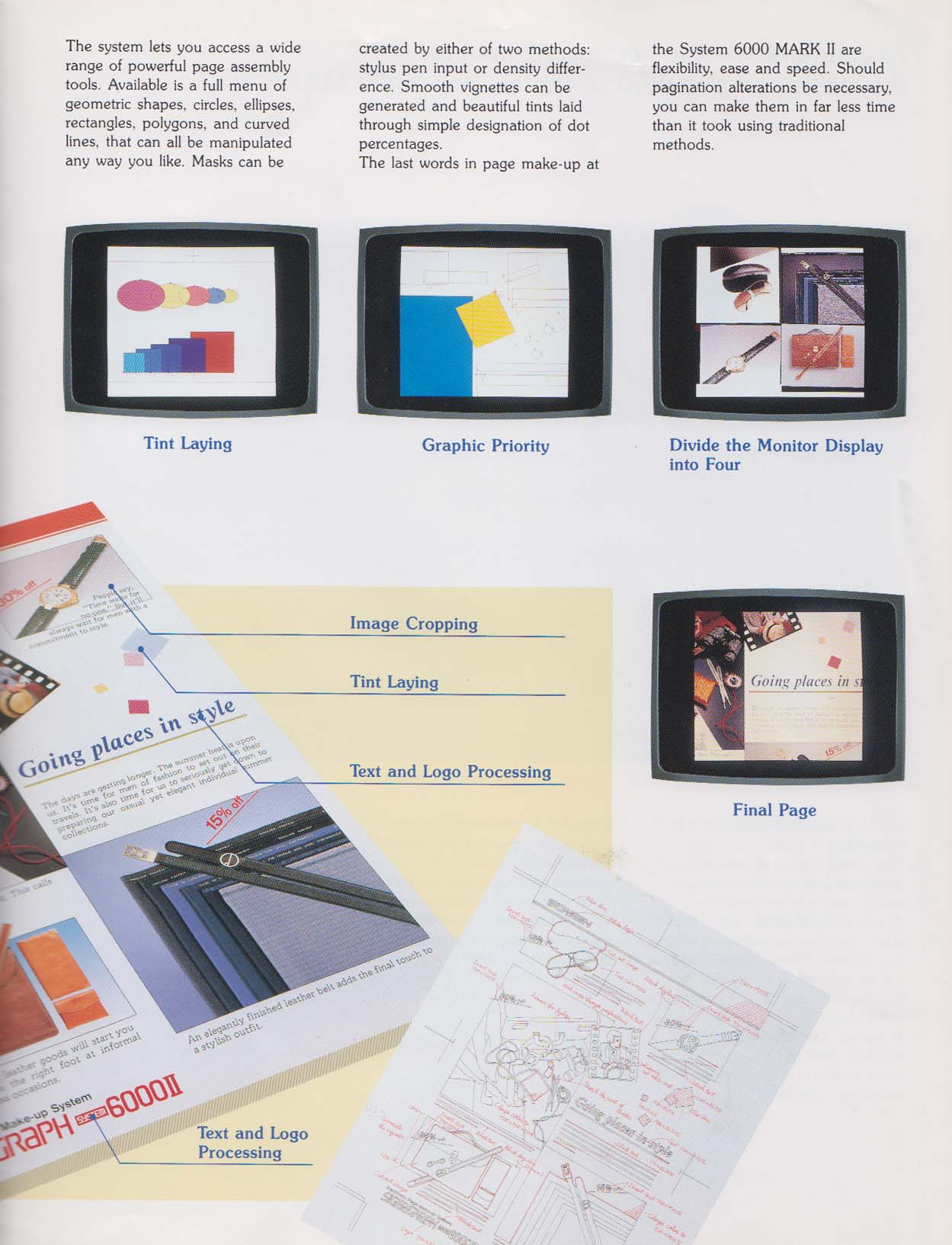
Sigmagraph 6000 page 8
-
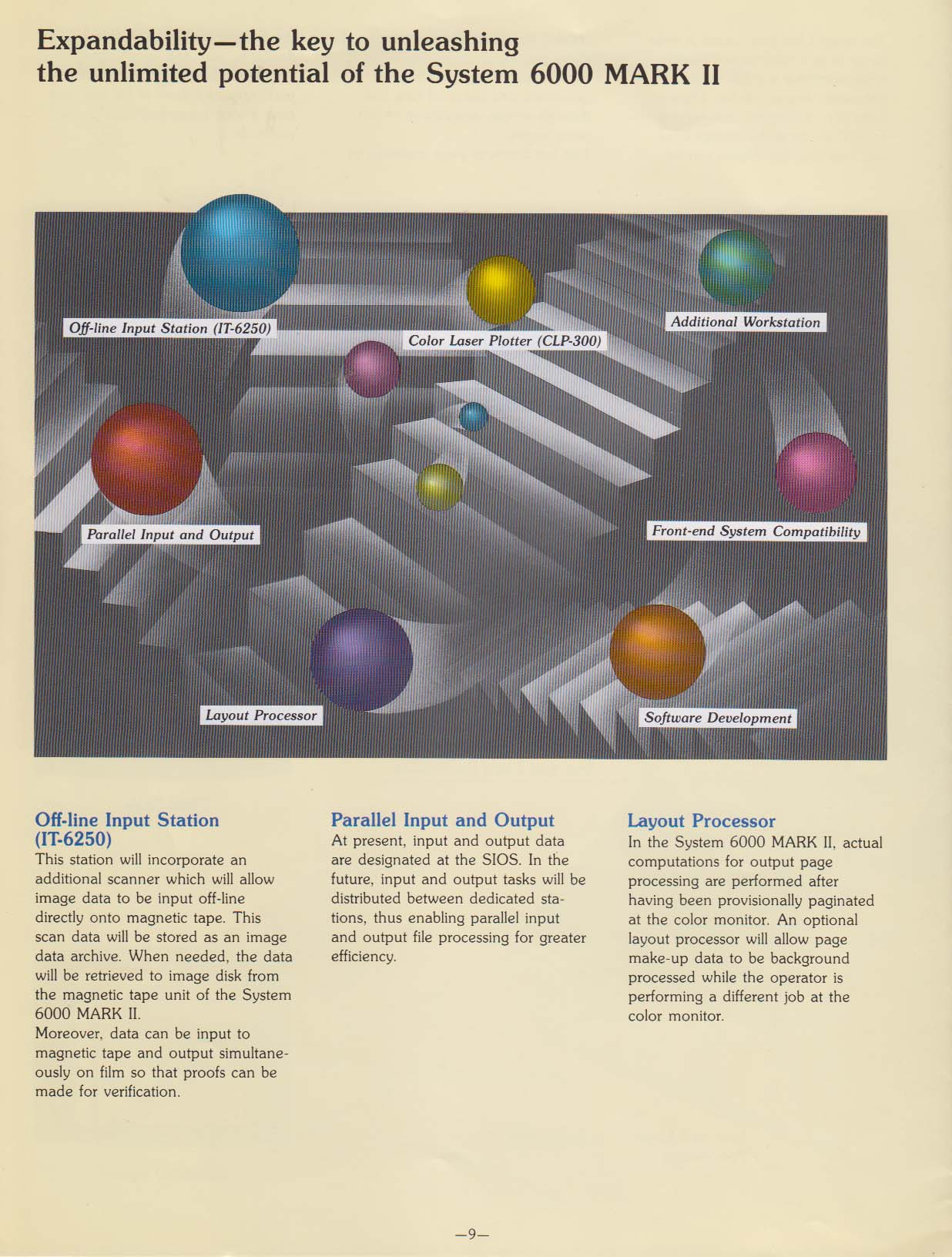
Sigmagraph 6000 page 9
-
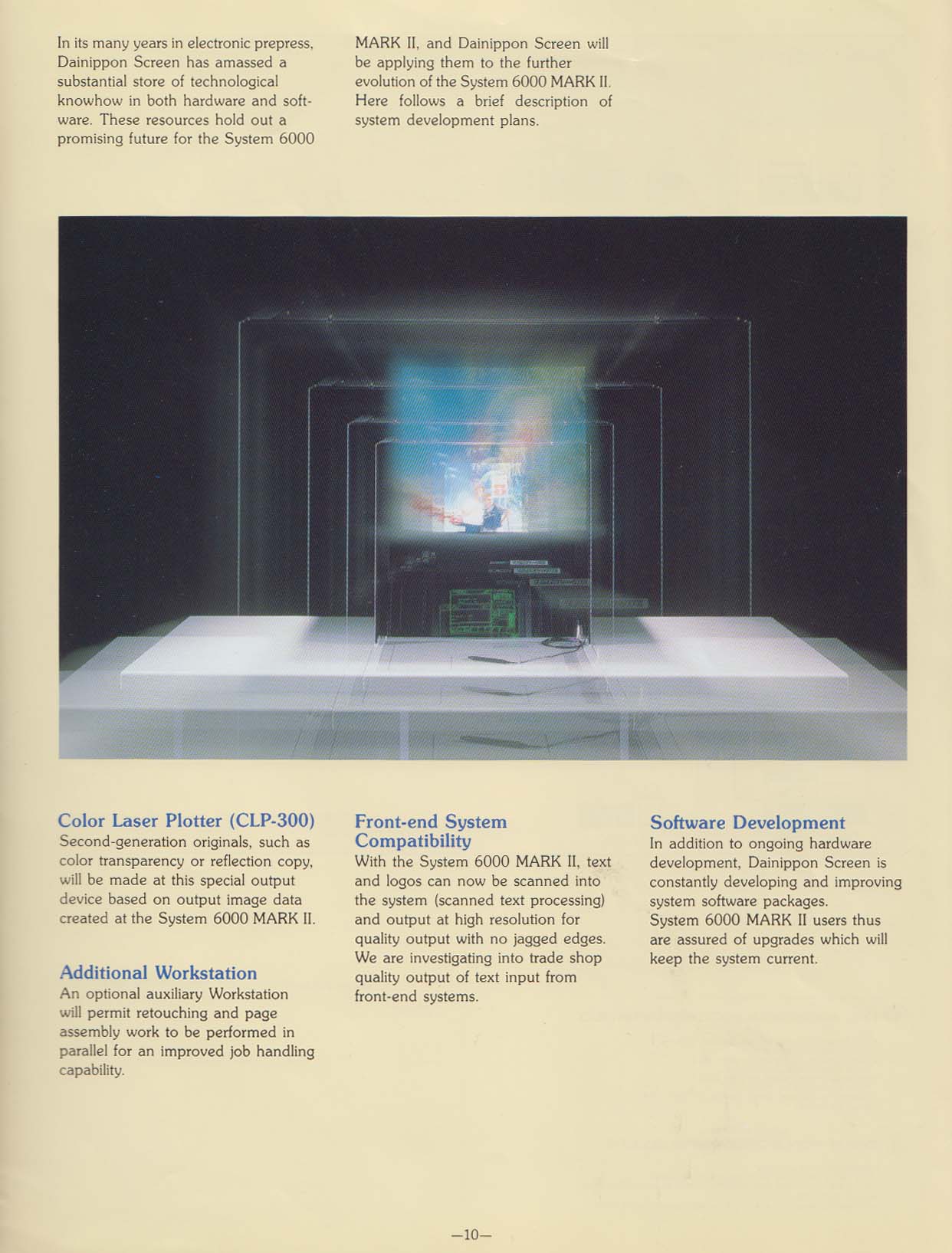
Sigmagraph 6000 page 10
-
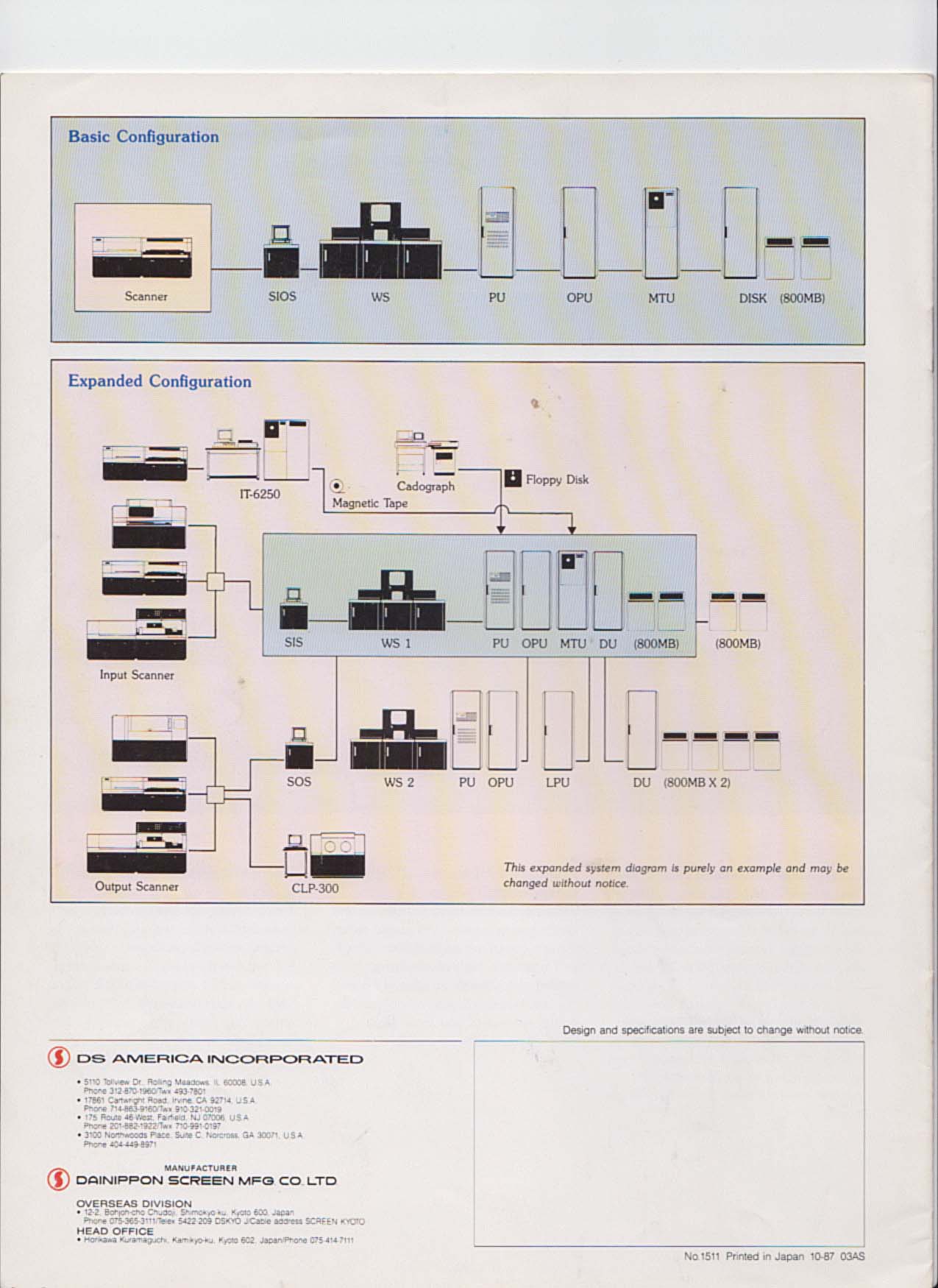
Sigmagraph 6000 back cover
The Sigmagraph 3000
If memory serves, the Sigmagraph 3000 was a mid-level system that came out as the 6000 and its massive equipment quickly became obsolete. It was half the hardware of the 6000 delivering more speed and customer-focused on low price. Clear evidence of Moore’s law at work.
Fast Forward to 35 years…
Today we have at our fingertips extremely powerful image editing solutions that run on a laptop. Isn’t technology amazing?
[amazon_link asins=’B07HKQDL7Y,B01CUQ10GY,B07HHQHKLY,B01N4E3O6X,0135261783,0134852486,B00VWCKJVA,B00BD6RLIO,B00Q74Z5IA’ template=’ProductCarousel’ store=’microlinx05-20′ marketplace=’US’ link_id=’63ee41e3-5c8f-4122-93ff-5472ee7f9d1e’]
